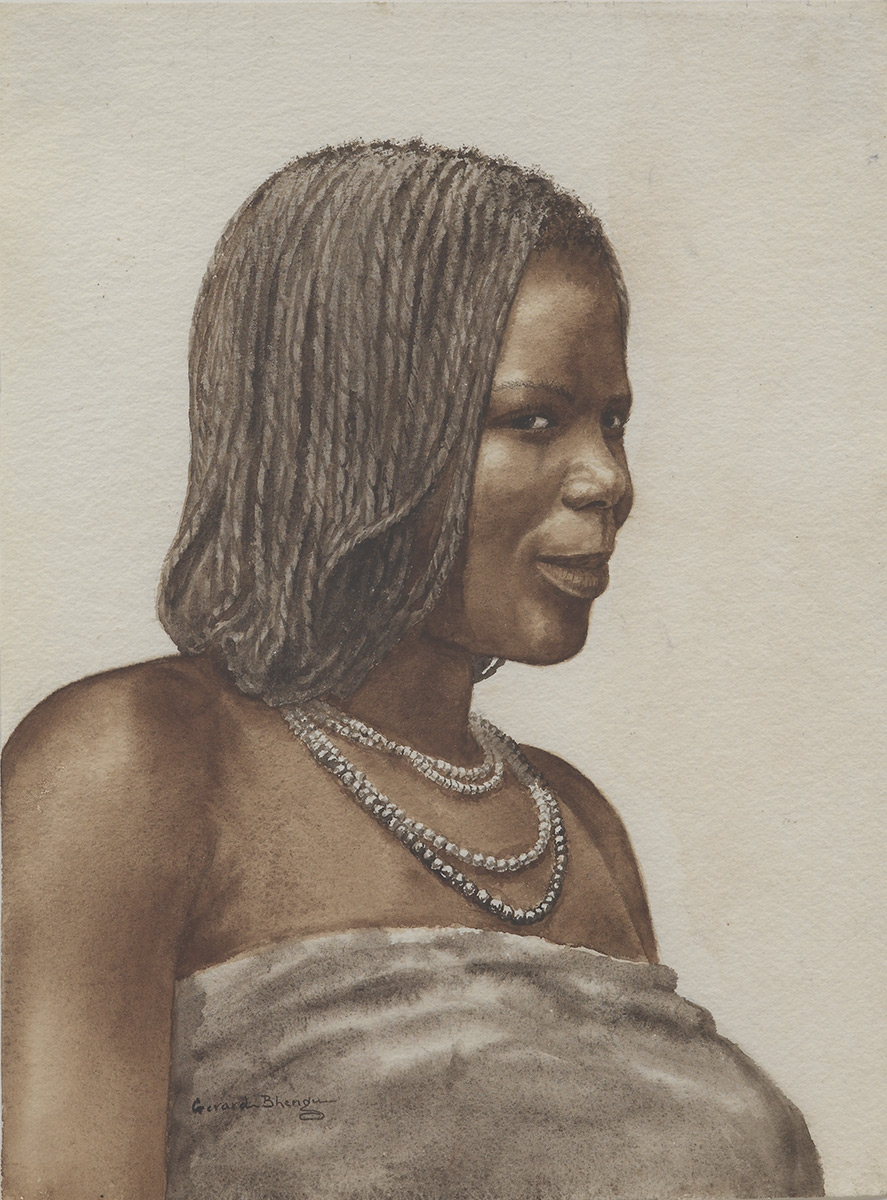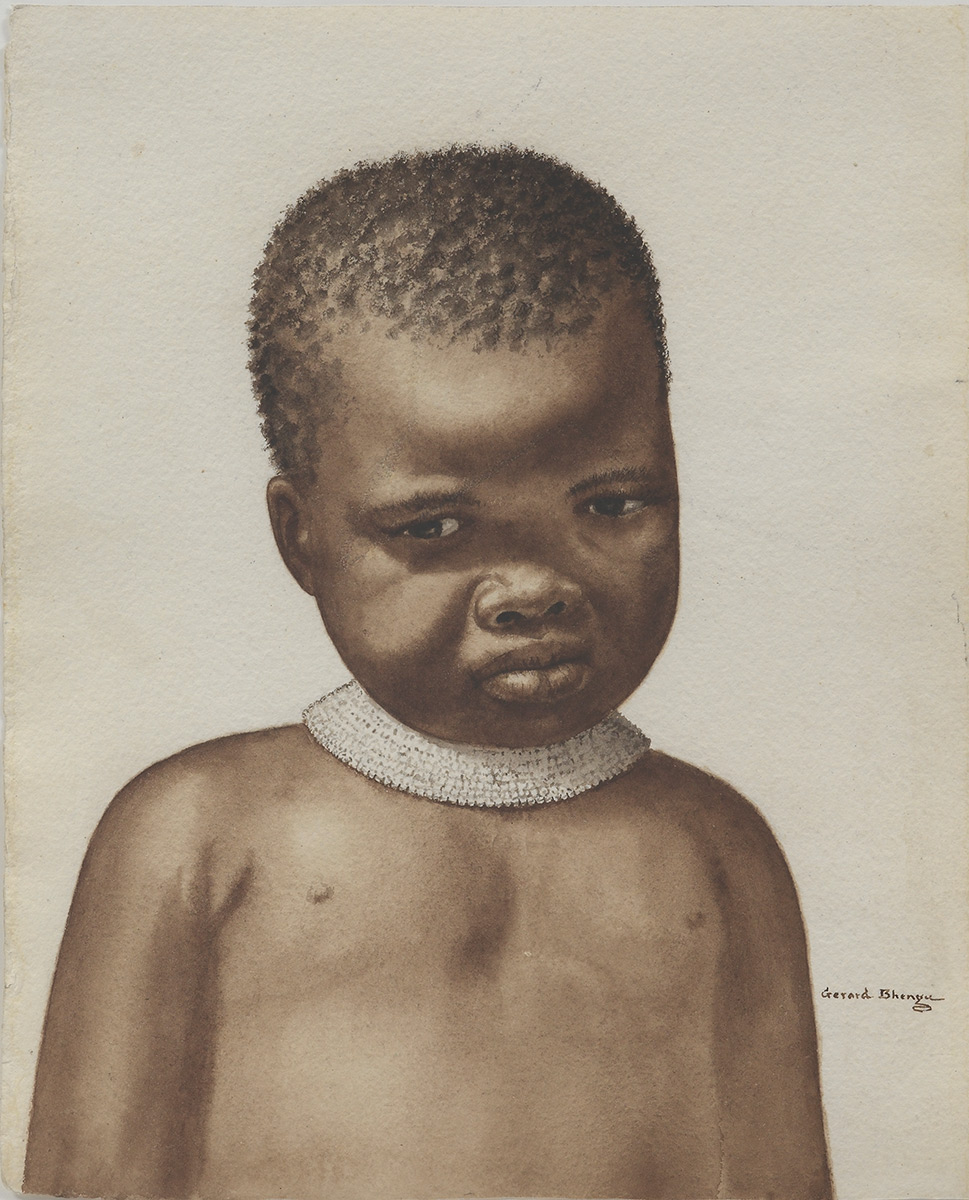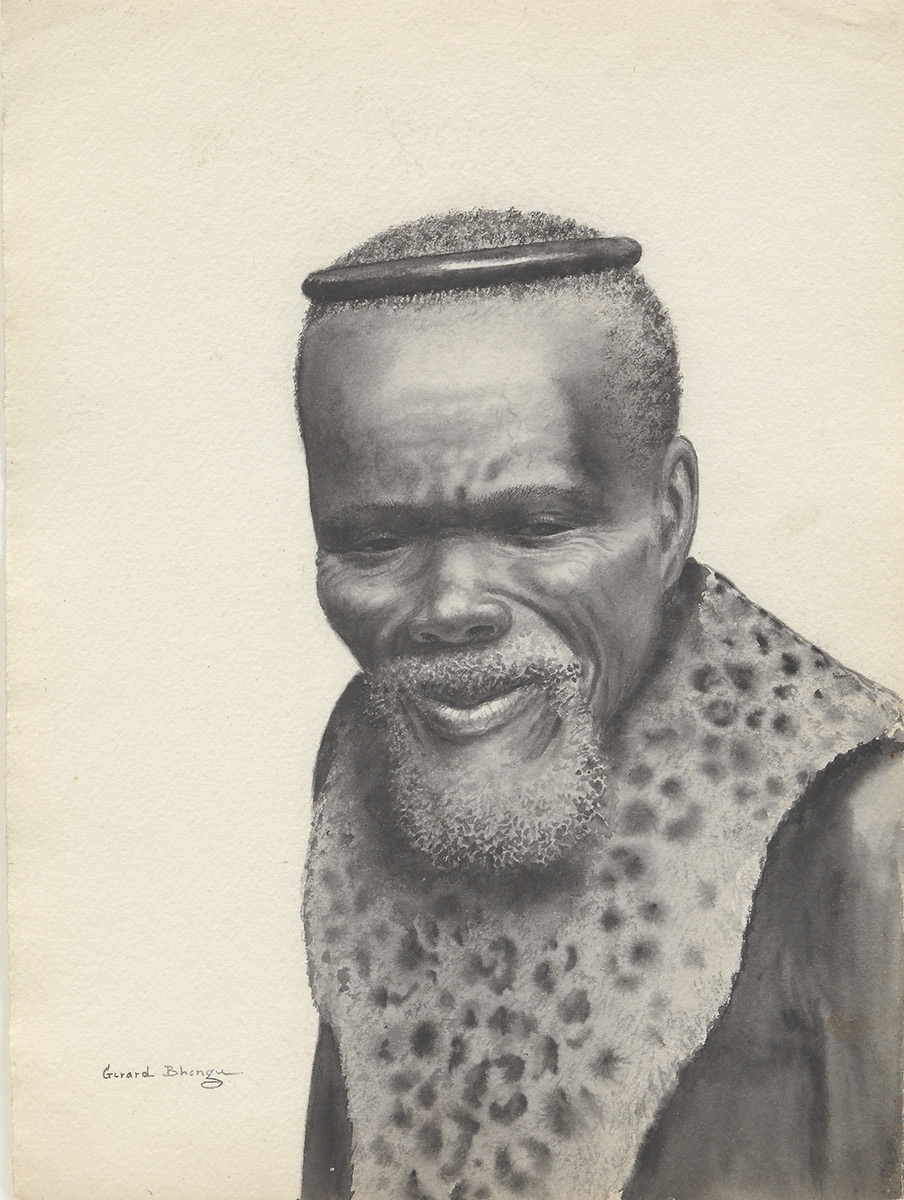GERARD BHENGU (1910 – 1990)
Ntombenhle
circa 1940
watercolour on paper
38 x 28 cm
Gerard Bhengu had a remarkable talent for portraiture. ‘His acute sense and attention for detail were perfectly suited to capturing with the great accuracy the customs and ways of life of his people,’ writes Warren Siebrits in Sekoto to Sihlali: Nine Black Pioneers of South African Art (2004).
Ogenaccia (The Innocent One)
circa 1940
watercolour on paper
38 x 28 cm
This watercolour portrait was featured as part of Art and Urbanisation (2003), a group show curated by Warren Siebrits that brought together the work of ten pioneering black artists whose work records the transition from rural to city life – a process intrinsically bound to and driven by the migrant labour system.
The exhibition traced the effects of the process of urbanisation on the work of artists Gerard Sekoto, Andrew Motjuoadi, Lucas Sithole, Gerard Bhengu, George Pemba, Ephraim Ngatane, Durant Sihlali, Ezrom Legae, Dumile Feni and Julian Motau over the years 1940 – 1971 and charted a lost tradition, offering viewers a rich and rare assembly of works more often found in auction houses, in the hands of private collectors and in European museums.
Patriarch
circa 1940
watercolour on paper
38 x 28 cm
‘Bhengu told Yvonne Winters of the Killie Campbell Africana Library that he generally sketched the main features of his subject and then completed the picture at home. He always drew actual people, but in some cases would improvise details. Winters saw a picture he had painted of an old man with a head ring. The artist explained that the old man was a real person but that he had added the head ring to make it look “like the old style”.’ The head ring, which signified the dignity of a married Zulu man, is/was a venerated symbol of Zulu culture.
SOURCE
Miles, E. 1997. Land and Lives: A Story of Early Black Artists, Cape Town: Human & Rousseau, 32.
BIOGRAPHY
Gerard Bhengu was born in the Creighton region of Natal (now KwaZulu-Natal). He was raised in the Roman Catholic faith and remained devoutly religious all his life.
As a child, he would often find himself in trouble with his mother for drawing on the walls of her hut. Pens or pencils were scarce in his homestead, so splintered charcoal from the cooking fire served as the initial medium for his drawings.
Benghu is known for his photo–real portraits and landscapes. Catholic imagery inspired much of his early work and, at times, he received commissions from church patrons. His first mentor at Centecow Mission, on the banks of the Umzimkulu River, was the missionary doctor Max Köhler, who commissioned him to illustrate such publications as The Izangoma Diviners (1941). Aside from his many portrayals of Zulu diviners (izangoma) and medicine men (iNyanga), Bhengu also produced informal portraits that document Zulu culture in the colonial context. From 1926 to 1931, he produced 150 drawings documenting life at Centocow for Dr Köhler.
He painted exclusively in watercolour and sepia ink on paper. Although he painted a number of polychrome works, the bulk of his output was in monochromatic sepia, largely because he could not afford a wide range of colours.
His early paintings and drawings, from 1926 to the late 1940s, are almost always signed ‘Bengu’. The Campbell Smith Collection contains a number of these earlier works. The use of ‘Bhengu’ in his signature is only found in his later works.
In 1940, Bhengu was noticed by Payne Brothers, a large Durban department store, which sold paintings and held art competitions, and his sepia portraits found a market with local and international tourists, particularly from the Union Castle liners stopping at Durban. His ability to render facial details with great psychological sensitivity was much admired. At times, he painted in public in the store in order to ‘convince those Europeans who refused to believe that the work was actually his’.
From 1942 onwards, the amateur ethnographer Dr Killie Campbell commissioned many works by Bhengu, which are now housed in the Killie Campbell Museum Collection.
Bhengu took part in various group exhibitions, including the 1979 touring exhibition, Contemporary African Art in South Africa, and Historical Perspective of Black South African Artists at the Alliance Française in Pretoria in 1986.
In 2013, the Gerard Bhengu Museum was opened at Centocow Mission in Creighton in celebration of his legacy.




